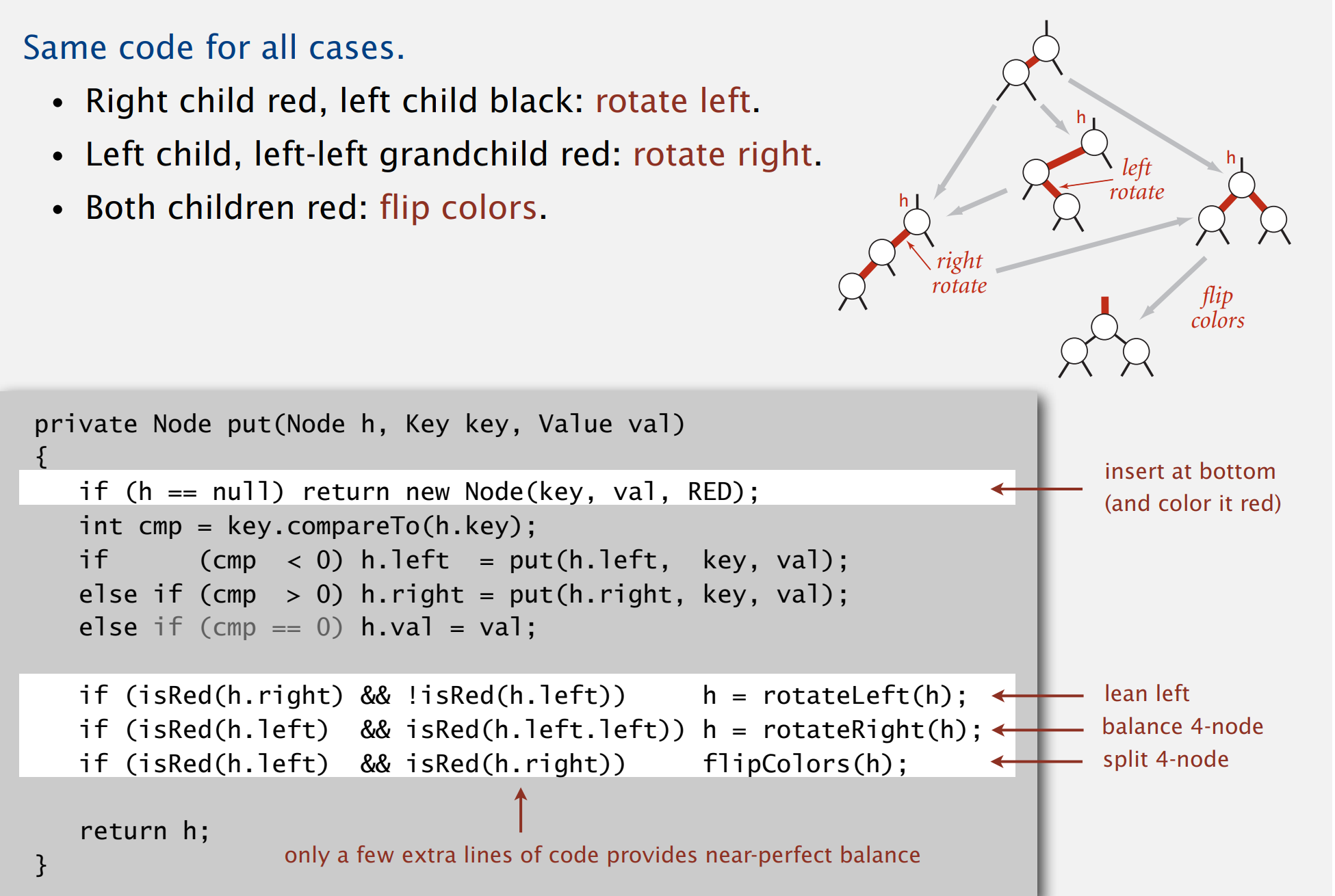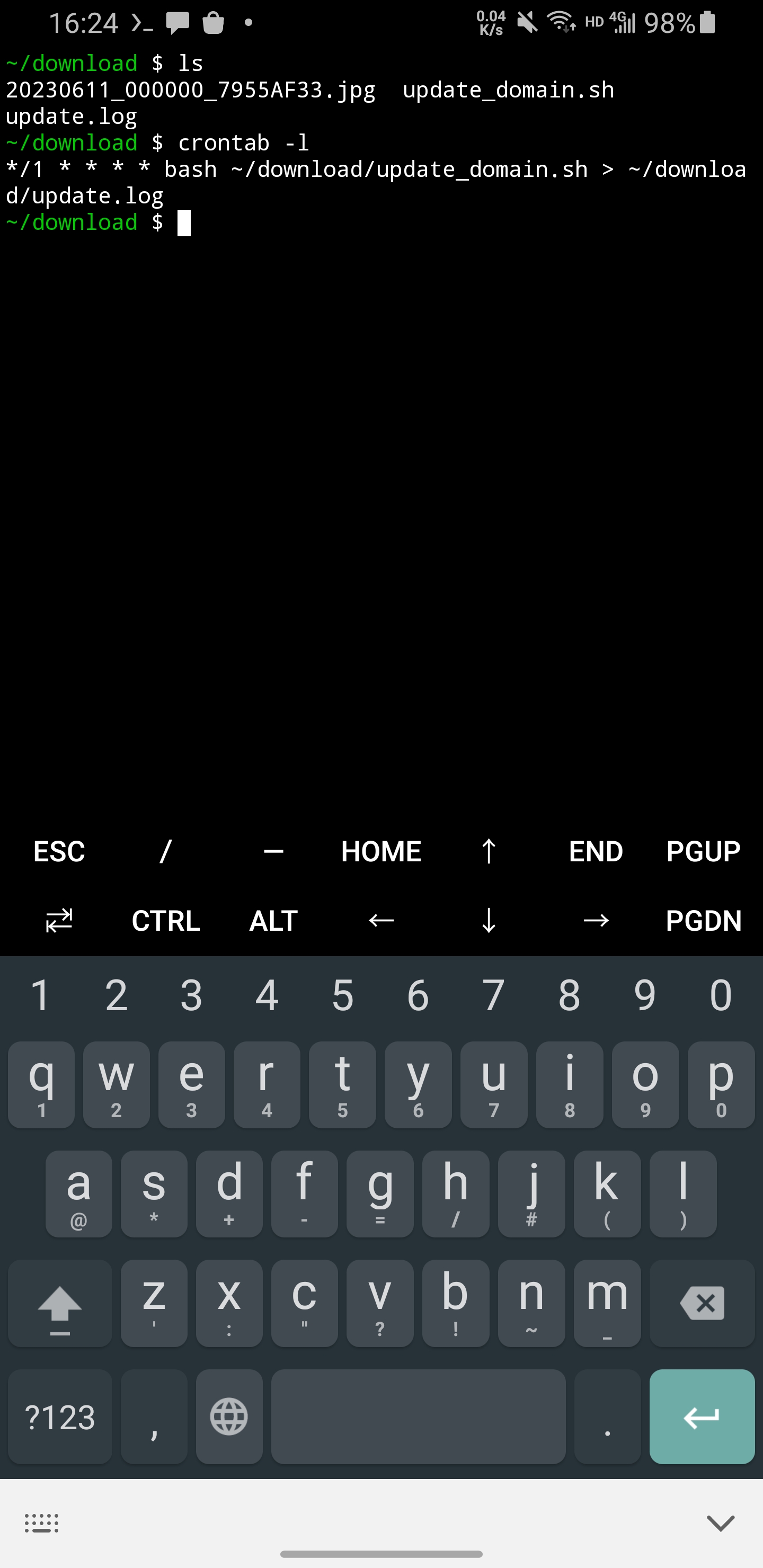Doubly Linked List
什麼是雙向鏈表
雙向鏈表是一種特殊的鏈表,其中的每個節點都包含前一個和後一個節點的引用。

1// Class for Doubly Linked List
2public class DLL {
3 // Head of list
4 Node head;
5 // Doubly Linked list Node
6 class Node {
7 int data;
8 Node prev;
9 Node next;
10 // Constructor to create a new node
11 // next and prev is by default initialized as null
12 Node(int d) { data = d; }
13 }
14}
1# Node of a doubly linked list
2class Node:
3 def __init__(self, next=None, prev=None, data=None):
4 # reference to next node in DLL
5 self.next = next
6
7 # reference to previous node in DLL
8 self.prev = prev
9 self.data = data
1type Node struct {
2 Value int
3 Previous *Node
4 Next *Node
5}
6
7type LinkedList struct {
8 Head *Node
9 Length int
10}
對比普通鏈表的優勢
- 可以向前或者向後遍歷
- 給定一個節點,如果需要刪除它,雙向鏈表比單向鏈表更快一些,因爲你可以執行以下邏輯即可刪除,而不需要再次查找一次節點的 prev
1node.prev.next = node.next 2node.next.prev = node.prev - 同理,給定一個節點,在其前面插入一個新的節點更快
對比普通鏈表的劣勢
- 空間浪費:每個節點都要保存上一個節點的引用。使用 C++ 的一個示例可以解決空間浪費的問題,見此 https://www.geeksforgeeks.org/xor-linked-list-a-memory-efficient-doubly-linked-list-set-1/
- 因爲多了一個引用,每次操作都需要更多的動作
應用場景
- 瀏覽器的前進和後退
- 很多程序的 undo 和 redo 功能
- LRU ( Least Recently Used ) / MRU ( Most Recently Used ) Cache
2-3 Search Tree
建議看 Coursera 上的視頻 https://www.coursera.org/learn/algorithms-part1/lecture/wIUNW/2-3-search-trees,本章節的動畫文件均由該視頻截屏後轉換。
概念和圖
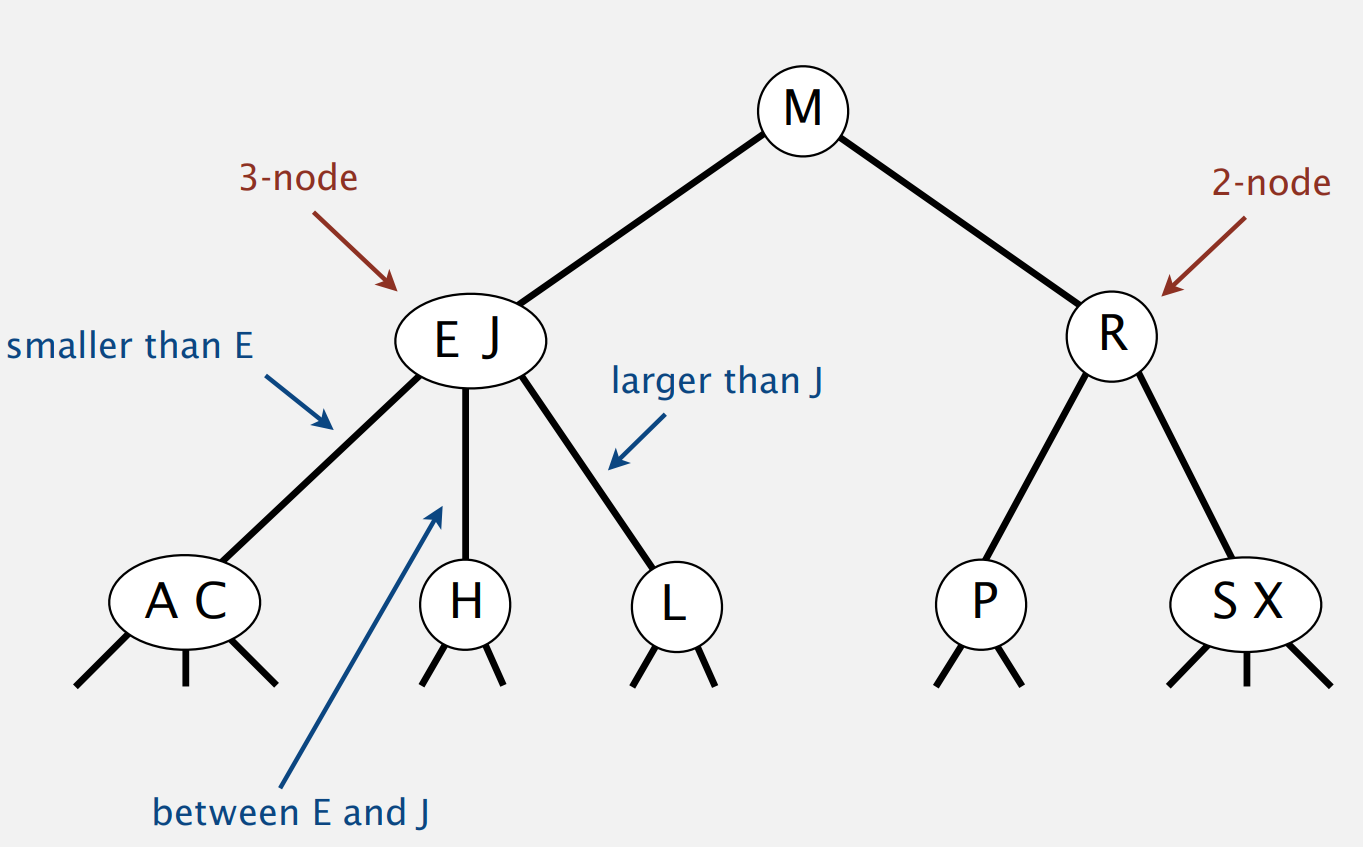
- 2-node: 1 元素,2個子 node
- 3-node: 2 元素,3個子 node
- 從 root 到 null link 的每條路徑都等長
2-3 tree demo 搜索的過程
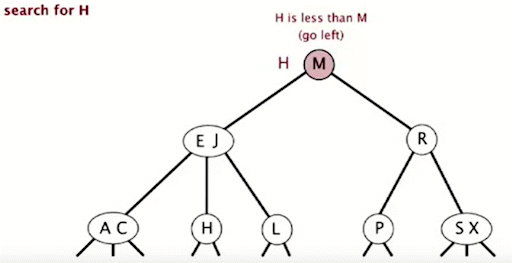
2-3 tree demo 插入
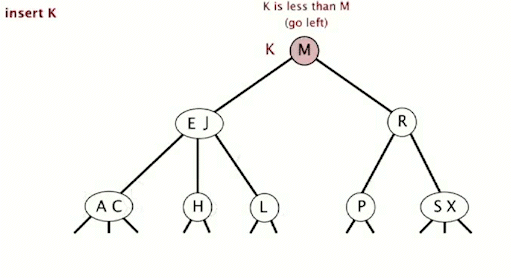
插入到一個 3-node 會發生什麼?
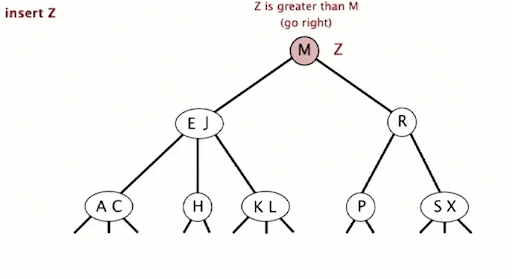
2-3 tree 構造過程

屬性
始終維護對稱和平衡。性能
- 完美的平衡:每條從根節點到 null links 的路徑都有相同的長度
- 樹的高度:
- 最差情況:log2N,全部是 2-node
- 最好情況:log3N,全部是 3-node
- 12-20(100萬node)
- 18-30(10億node)
- 查詢和插入操作對數級性能
Red Black BSTs
BST means binary search tree.
Left-leaning read-black BSTs
左傾紅黑樹:通過紅色膠水(紅線)將 3-node 中的兩個元素粘起來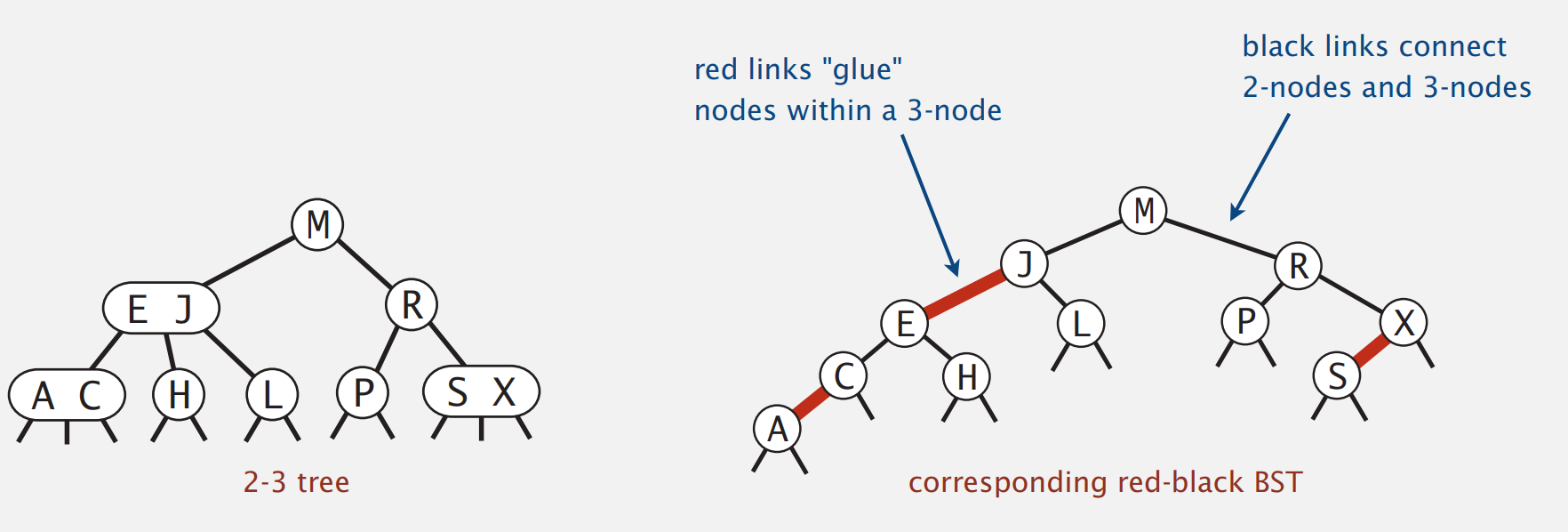
一個等價的定義
如果一個 BST 滿足以下幾個條件,那麼它就是一個左傾紅黑樹(LLRB):
- 沒有節點同時連接了兩條紅線
- 每條從 root 到 null link 的路徑有相同數量的黑線(2-3樹的特性)
- 紅線向左傾斜
實際上,從任意一個節點到其子樹的葉子節點經過的黑線都是相同的。
搜索忽略顏色,和普通的 BST 一致,但是因爲其保持較好的平衡,通常更快。
1public Val get(Key key){
2 Node x = root;
3 while (x != null){
4 int cmp = key.compareTo(x.key);
5 if (cmp < 0) x = x.left;
6 else if (cmp > 0) x = x.right;
7 else if (cmp == 0) return x.val;
8 }
9 return null;
10}
因爲每個節點和父節點相連的只有一條線,因此可以將顏色編碼到代碼裏面
1 private static final boolean RED = true;
2 private static final boolean BLACK = false;
3 private class Node {
4 Key key;
5 Value val;
6 Node left, right;
7 boolean color; // 注意這裏 color 是指連接父節點的線的顏色
8 }
9 private boolean isRed(Node x) {
10 if (x == null) return false; // null links are black
11 return x.color == RED;
12 }
上面的代碼用圖來解釋,就是:
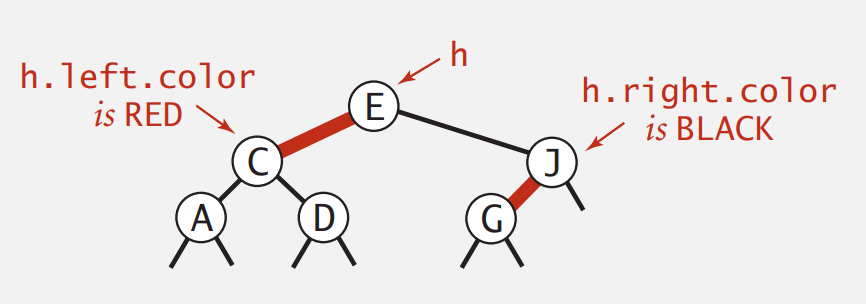
左旋(右旋同理,不變的是要維持樹的平衡和對稱)
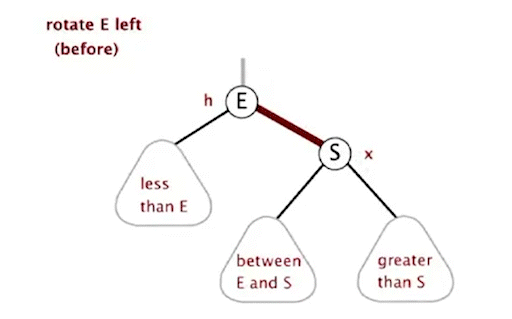
1private Node rotateLeft(Node h) {
2 assert isRed(h.right);
3 Node x = h.right;
4 h.right = x.left;
5 x.left = h;
6 x.color = h.color;
7 h.color = RED;
8 return x;
9}
請回答,如果左旋以下 BST 中包含E的節點,那麼左旋後的 BST 按照 level order 遍歷是什麼呢?(答案見評論。)
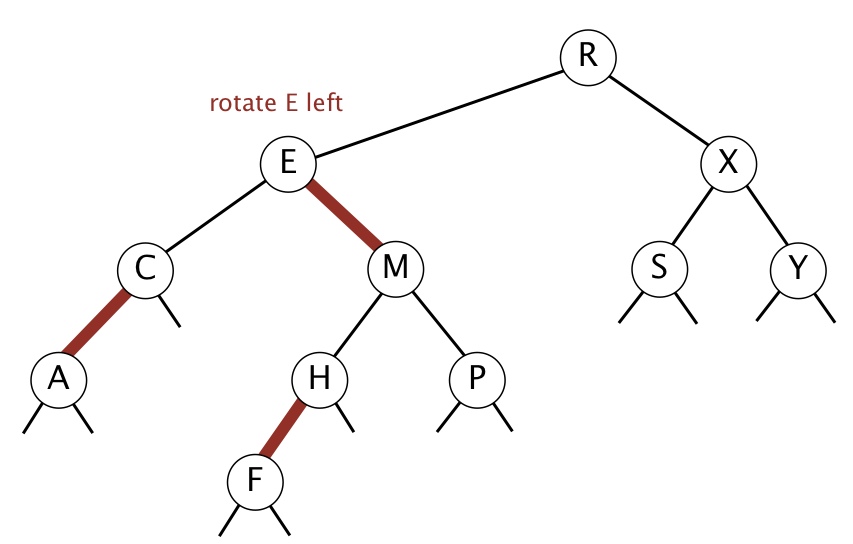
顏色反轉(color flip)
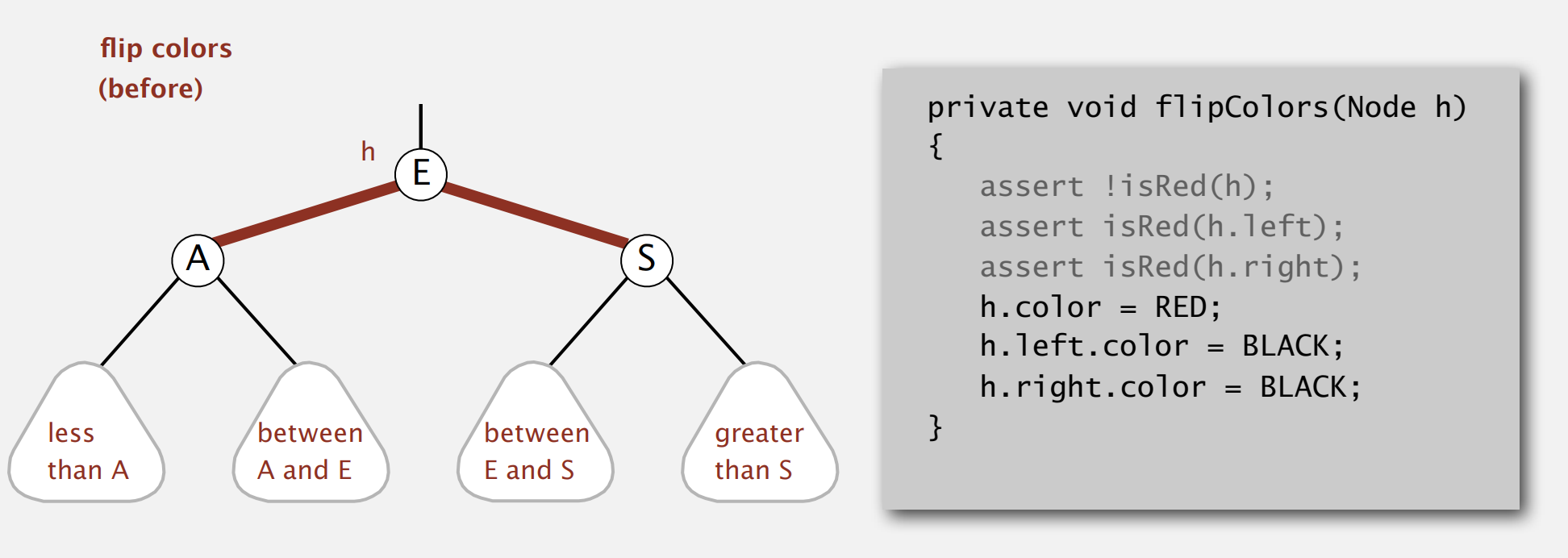
插入:下圖插入C,作爲 2-3 tree 來考慮,插入到右側,然後左旋
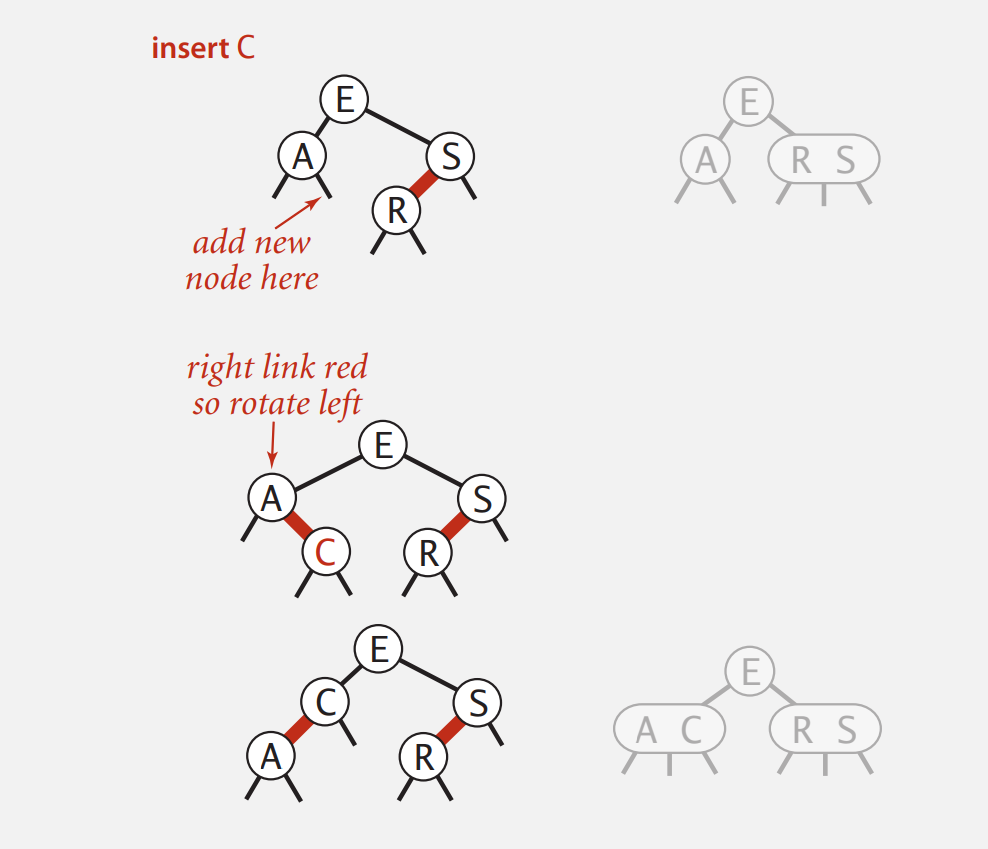
插入:直觀展示
插入 255 個元素,按照最壞情況,從小到大插入
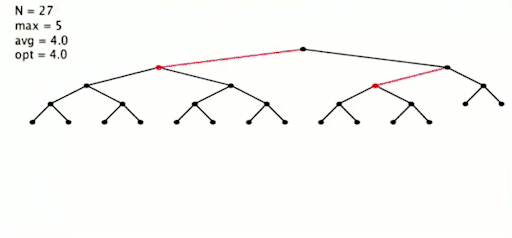
簡單代碼實現
- 左黑右紅向左旋
- 左黑到底向右旋
- 兩邊都紅顏色變
